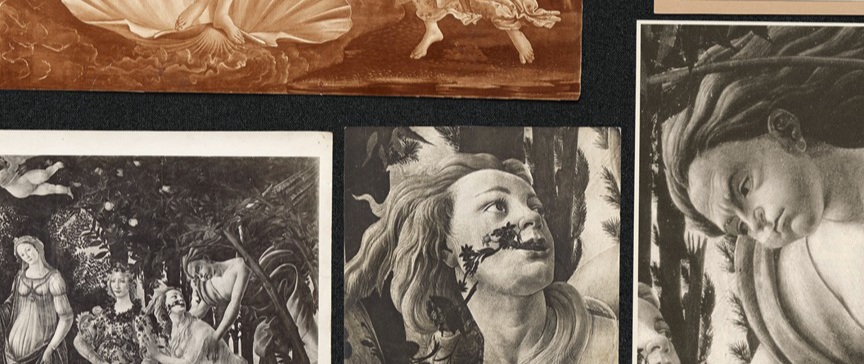While followers of this blog are more than likely familiar with the Crowley collection at the Warburg Institute, they may be a little less familiar with the work it’s progenitor Aby Warburgh. Well now you can with a remarkable online exhibition of his ‘Mnemosyne Atlas’. I highly recommend spending some time with his panels. You will see innumerable esoteric gems and understand why I think the Thoth Tarot art really found one of the best institute for posterity. I have also included the virtual exhibition link below BWH
Atlas of Art and Memory Is a Wonder of the Modern World
With nearly 1,000 images, Aby Warburg’s radical form of visual study is also an artwork itself. Now you can see it online.
For most of us, it’s natural to look at many pictures at the same time. We do it every day via internet searches and digital pinup boards — even refrigerator doors have become ad hoc photo albums.
But viewing fine art pictures in this nonlinear way, with no accompanying text and outside of a museum, was radical 100 years ago. This is partly what makes Aby Warburg’s “Bilderatlas Mnemosyne” (“Mnemosyne Atlas,” in English), an encyclopedic collection of almost 1,000 images, so significant.
Warburg, a German art historian and cultural theorist, worked on the atlas from 1925 until his death in 1929. To make it, he took reproductions of artworks and images of coins, celestial maps, calendars and genealogical tables, as well as advertisements posters and postage stamps, and pinned them to wooden boards covered with black cloth. He rearranged the panels in his library in Hamburg and used them in lectures, and wanted to publish the atlas as a book.
The work’s title comes from the Greek goddess of memory and mother of the Nine Muses (Zeus was the baby daddy). Warburg was convinced that antiquity was a starting point for the study of artists of the Renaissance, but also that its themes had emotional meaning that resonated for modern times — particularly in a period of instability and change.
Read full article @ The New York Times
Link here to



indeed the Atlas was a watershed event in western cultural history. i have often compared it to 777. Seeing it here in Berlin last month was a humbling experience. Warburg is another fascinating character and the tale of how his collection was snuck out of Hamburg to avoid the Nazis reads like a wartime thriller. I too am of the opinion that the Yorke Collection found an excellent home at the Warburg Institute.